
Historical Charm of Hwangnam-dong: The Heart of Gyeongju
Discover Hwangnam-dong in Gyeongju, South Korea: A timeless journey through history with ancient tombs, traditional hanok houses, and vibrant local culture.
Hwangnam-dong is a captivating neighborhood in Gyeongju, South Korea, often referred to as the 'museum without walls'. This area is steeped in history, showcasing the grandeur of the ancient Silla Dynasty. As you walk through its streets, you are transported back in time, surrounded by traditional hanok houses and centuries-old landmarks. A must-visit in Hwangnam-dong is the Daereungwon Tomb Complex. This archaeological site is home to large, grass-covered burial mounds of Silla kings and nobles. The Cheonmachong Tomb, one of the most famous in the complex, offers a fascinating glimpse into the rich history and culture of the Silla period. Nearby, the Gyeongju National Museum houses an impressive collection of relics and artifacts, providing deeper insight into the region's past. Hwangnam-dong is also known for its vibrant cultural scene. The area is dotted with charming cafes, art galleries, and boutique shops, where you can find unique souvenirs and local crafts. The neighborhood comes alive during the Gyeongju Cherry Blossom Festival in spring, when the streets are adorned with beautiful cherry blossoms, creating a picturesque setting for leisurely strolls. For those interested in culinary delights, Hwangnam-dong offers an array of traditional Korean eateries. Don’t miss out on trying Hwangnam-ppang, a local pastry filled with sweet red bean paste, which originated in this very neighborhood. The combination of historical allure and modern attractions makes Hwangnam-dong a perfect destination for tourists seeking a blend of old and new experiences.
Local tips in Hwangnam-dong
- Visit early in the morning to avoid crowds at the Daereungwon Tomb Complex.
- Rent a bike to explore the neighborhood and nearby attractions at your own pace.
- Try Hwangnam-ppang at its original bakery for an authentic taste experience.
- Check the local calendar for cultural events and festivals during your visit.
- Wear comfortable shoes, as many attractions are best explored on foot.
Historical Charm of Hwangnam-dong: The Heart of Gyeongju
Hwangnam-dong is a captivating neighborhood in Gyeongju, South Korea, often referred to as the 'museum without walls'. This area is steeped in history, showcasing the grandeur of the ancient Silla Dynasty. As you walk through its streets, you are transported back in time, surrounded by traditional hanok houses and centuries-old landmarks. A must-visit in Hwangnam-dong is the Daereungwon Tomb Complex. This archaeological site is home to large, grass-covered burial mounds of Silla kings and nobles. The Cheonmachong Tomb, one of the most famous in the complex, offers a fascinating glimpse into the rich history and culture of the Silla period. Nearby, the Gyeongju National Museum houses an impressive collection of relics and artifacts, providing deeper insight into the region's past. Hwangnam-dong is also known for its vibrant cultural scene. The area is dotted with charming cafes, art galleries, and boutique shops, where you can find unique souvenirs and local crafts. The neighborhood comes alive during the Gyeongju Cherry Blossom Festival in spring, when the streets are adorned with beautiful cherry blossoms, creating a picturesque setting for leisurely strolls. For those interested in culinary delights, Hwangnam-dong offers an array of traditional Korean eateries. Don’t miss out on trying Hwangnam-ppang, a local pastry filled with sweet red bean paste, which originated in this very neighborhood. The combination of historical allure and modern attractions makes Hwangnam-dong a perfect destination for tourists seeking a blend of old and new experiences.
Iconic landmarks you can’t miss
Cheomseongdae Observatory
Explore the ancient Cheomseongdae Observatory, a testament to Silla Dynasty astronomy in the heart of Gyeongju, Korea's historical gem.

Woljeonggyo Bridge
Experience the breathtaking beauty of Woljeonggyo Bridge, a stunning architectural wonder in Gyeongju, South Korea.

Hwangnidan-gil
Experience the enchanting blend of culture and modernity at Hwangnidan-gil, a must-visit street in Gyeongju-si, South Korea.

Cheonmachong
Discover the ancient royal tomb of Cheonmachong in Gyeongju, a historical landmark that reflects Korea's rich cultural heritage and breathtaking beauty.
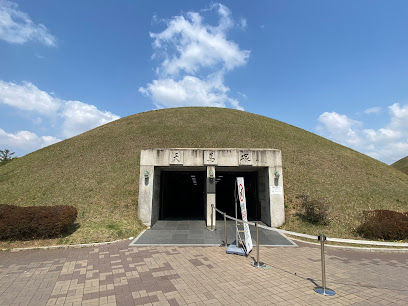
Daereungwon Tomb Complex
Discover the ancient wonders of Daereungwon Tomb Complex, a serene UNESCO World Heritage site showcasing Korea's royal burial traditions.

Tomb of King Muyeol of Silla
Explore the Tomb of King Muyeol of Silla in Gyeongju, a remarkable site that unveils Korea's rich history and majestic royal heritage.

Oreung Royal Tombs
Discover the Oreung Royal Tombs, a UNESCO World Heritage site in Gyeongju, South Korea, where history and tranquility blend seamlessly.
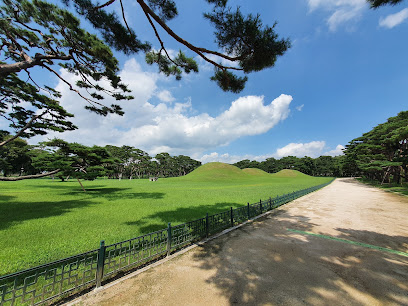
Royal Tomb of King Michu
Explore the Royal Tomb of King Michu, a significant historical landmark in Gyeongju, showcasing the ancient Silla Kingdom's grandeur and heritage.

Gyeongju Eastern Historic Site
Discover the rich history and stunning landscapes at Gyeongju Eastern Historic Site, a UNESCO World Heritage treasure in Korea.
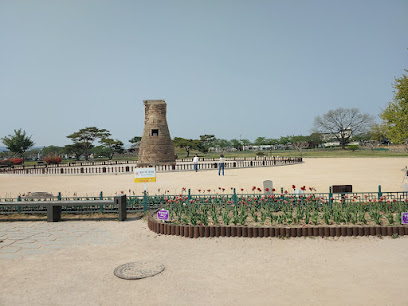
Hwangnamdaechong Tomb
Explore Hwangnamdaechong Tomb, a historical landmark that reveals the ancient Silla Dynasty's royal heritage amidst beautiful landscapes.

Unmissable attractions to see
Woljeonggyo Bridge
Discover the enchanting Woljeonggyo Bridge in Gyeongju, a stunning architectural wonder blending history and nature.

Hwangnidan-gil
Explore Hwangnidan-gil: A captivating blend of traditional charm and contemporary culture in Gyeongju, South Korea.

Gyeongju Gyochon Traditional Village
Experience the beauty and heritage of Gyeongju Gyochon Traditional Village, a cultural treasure offering traditional architecture, cuisine, and vibrant festivals.
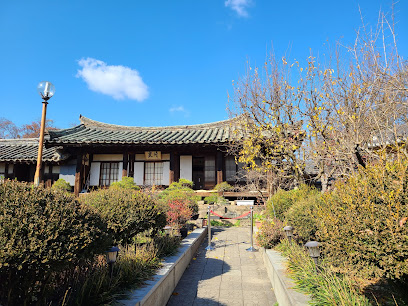
Cheonmachong
Explore the ancient wonders of Cheonmachong, Gyeongju’s heavenly tomb that reveals the rich history of the Silla Dynasty.
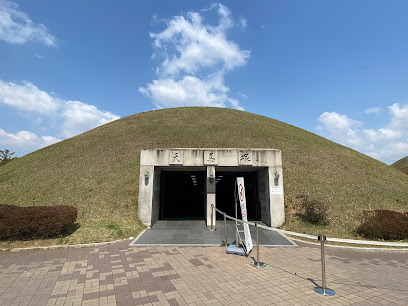
Geumjangdae Pavilion
Explore the tranquil beauty of Geumjangdae Pavilion in Gyeongju, a historical gem offering stunning views and cultural experiences.

Royal Tomb of King Michu
Discover the Royal Tomb of King Michu, a UNESCO World Heritage site in Gyeongju, showcasing the rich history of the Silla Dynasty amidst serene landscapes.

Essential places to dine
Gyodong Sssambap
Experience authentic Korean ssambap at Gyodong Sssambap in Gyeongju - where tradition meets flavor in every bite.

Hyanghwajeong
Discover authentic Korean flavors at Hyanghwajeong in Gyeongju - where tradition meets modern dining in a warm atmosphere.

Seasoning
Discover Seasoning in Gyeongju: A cozy Western restaurant offering delicious dishes and exceptional service amidst rich cultural heritage.

Ryoko
Experience authentic Japanese cuisine at Ryoko in Gyeongju – where tradition meets flavor in every dish.

DOMI Kitchen
Experience authentic Italian flavors at DOMI Kitchen in Gyeongju-si - where family-friendly dining meets culinary excellence.

Gimssibeut
Experience the essence of Asian Fusion at Gimssibeut in Gyeongju—where culinary innovation meets tradition for an unforgettable dining experience.

With Gusto
Experience authentic Western cuisine at With Gusto in Gyeongju-si, where delicious flavors meet warm hospitality in a charming setting.

Hwangnam Gyeongju Sikdang
Discover authentic Korean flavors at Hwangnam Gyeongju Sikdang – a culinary gem in the heart of Gyeongju.

Sobakage
Indulge in authentic Japanese cuisine at Sobakage, where tradition meets flavor in the heart of Gyeongju-si.

1994 Dining
Experience the best of Western cuisine at 1994 Dining in Gyeongju-si—where flavor meets tradition in an inviting atmosphere.

Markets, malls and hidden boutiques
디스모먼트(thismoment)
Explore the charm of Gyeongju at 디스모먼트 (thismoment), your go-to destination for authentic Korean souvenirs and unique gifts.

청년감성상점
Explore 청년감성상점 in Gyeongju for unique souvenirs that capture the culture and beauty of Korea, perfect for every traveler.

로빈스 콜랙션스
Discover unique souvenirs at 로빈스 콜랙션스, a delightful gift shop in Gyeongju, showcasing local artistry and handcrafted treasures.

Baerisamneung Gongwon 배리삼능 농원
Explore the charm of Korean craftsmanship at Baerisamneung Gongwon, Gyeongju's delightful gift shop filled with unique treasures and local artistry.

마실
Discover the vibrant fashion scene at 마실, Gyeongju's unique clothing store, offering eclectic styles and local designs that celebrate Korean culture.

Leobchyu
Explore Gyeongju's unique gift shop, Leobchyu, featuring exquisite local crafts and souvenirs that capture Korea's rich culture and artistry.

소원상점
Explore the charm of Gyeongju at 소원상점, a delightful gift shop offering authentic Korean souvenirs and handcrafted treasures.

Gyeongju Agricultural Specialty Store (Local Food Shop)
Explore local flavors and unique gifts at Gyeongju Agricultural Specialty Store, a must-visit destination for food lovers and souvenir seekers.

What's up
Explore Gyeongju's vibrant culture at 'What's Up' Gift Shop, where unique souvenirs and local handicrafts await every traveler.

Ssopum
Explore Ssopum in Gyeongju for unique gifts and local crafts, embodying the rich culture and artistry of Korea.

Essential bars & hidden hideouts
Bar분 (Bar Boon)
Bar Boon: A vibrant bar in Gyeongju offering unique local drinks and a lively nightlife experience.
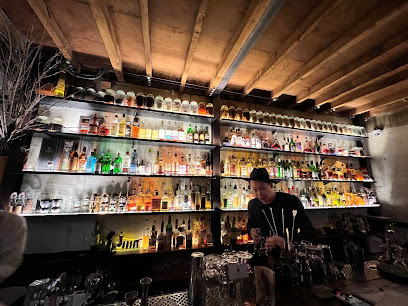
Stillroom
Discover Stillroom in Gyeongju for a unique bar experience blending local flavors, cozy ambiance, and delightful drinks in a historic setting.

Heuheuheu
Discover the vibrant atmosphere of Heuheuheu in Gyeongju, where craft beer meets delicious food in a welcoming bar setting.
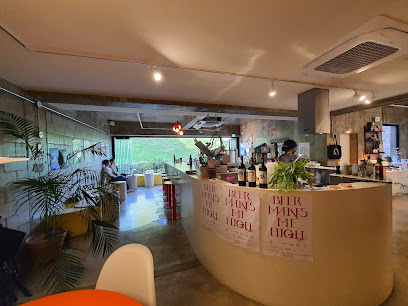
Gyeongju Cocktail Bar ELJEFE CUBANOS Pub
Discover the vibrant flavors and cocktails at ELJEFE CUBANOS, a unique Cuban restaurant and cocktail bar in Gyeongju, South Korea.
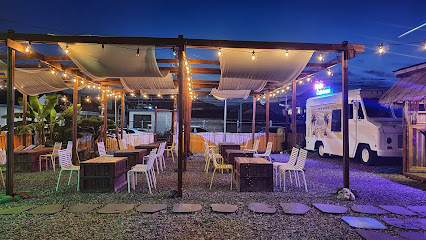
Bar Prep
Discover unique cocktails and stunning views of Gyeongju's ancient tombs at Bar Prep - a bar that blends culture and mixology.

오아시스 경주
Experience the perfect blend of exquisite wines and cozy ambiance at Oasis Gyeongju, a must-visit wine bar in the heart of Korea's ancient city.

Oni
Discover the vibrant nightlife at Oni, a must-visit bar in Gyeongju, offering exquisite drinks and a lively atmosphere for all to enjoy.
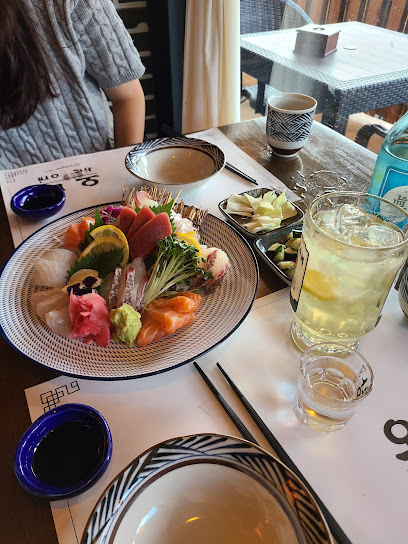
New Orleans Lounge & Pub
Discover the lively spirit of New Orleans Lounge & Pub in Gyeongju-si, where local flavors and vibrant nightlife come together in a festive atmosphere.

The Backyard
Discover the charm of Gyeongju at The Backyard, where local flavors and a cozy atmosphere come together for an unforgettable bar experience.

Yakkisim
Experience Gyeongju's nightlife at Yakkisim - a lively bar offering local drinks and a vibrant atmosphere for unforgettable evenings.

Local Phrases
-
- Hello안녕하세요
[annyeonghaseyo] - Goodbye안녕히 가세요
[annyeonghi gaseyo] - Yes네
[ne] - No아니요
[aniyo] - Please/You're welcome부탁합니다
[butakhamnida] - Thank you감사합니다
[gamsahamnida] - Excuse me/Sorry죄송합니다
[joesonghamnida] - How are you?어떻게 지내세요?
[eotteoke jinaeseyo?] - Fine. And you?잘 지내고요. 여러분은요?
[jal jinaegoyo. yeoreobun-eunyo?] - Do you speak English?영어 할 수 있어요?
[yeong-eo hal su iss-eoyo?] - I don't understand이해 못 해요
[ihae mot haeyo]
- Hello안녕하세요
-
- I'd like to see the menu, please메뉴를 보고 싶어요, 부탁합니다
[menyuleul bogo sip-eoyo, butakhamnida] - I don't eat meat고기를 먹지 않아요
[gogileul meogji anh-ayo] - Cheers!건배!
[geonbae!] - I would like to pay, please계산할게요, 부탁합니다
[gyesanhalkkeyo, butakhamnida]
- I'd like to see the menu, please메뉴를 보고 싶어요, 부탁합니다
-
- Help!도와주세요!
[dowajuseyo!] - Go away!저리 가!
[jeoli ga!] - Call the Police!경찰을 불러주세요!
[gyeongchal-eul bulleojuseyo!] - Call a doctor!의사를 부르세요!
[uisaleul buleuseyo!] - I'm lost길을 잃었어요
[gileul ilh-eoss-eoyo] - I'm ill아파요
[apayo]
- Help!도와주세요!
-
- I'd like to buy...사고 싶어요...
[sago sip-eoyo...] - I'm just looking보고만 있어요
[bogoman iss-eoyo] - How much is it?얼마에요?
[eolma-eyo?] - That's too expensive너무 비싸요
[neomu bissayo] - Can you lower the price?가격을 깎아 주실 수 있나요?
[gageog-eul kkaj-a jusil su issnayo?]
- I'd like to buy...사고 싶어요...
-
- What time is it?지금 몇 시에요?
[jigeum myeoch si-eyo?] - It's one o'clock한 시에요
[han si-eyo] - Half past (10)열 시 반
[yeol si ban] - Morning아침
[achim] - Afternoon오후
[ohu] - Evening저녁
[jeonyeok] - Yesterday어제
[eoje] - Today오늘
[oneul] - Tomorrow내일
[naeil] - 1하나
[hana] - 2둘
[dul] - 3셋
[set] - 4넷
[net] - 5다섯
[daseot] - 6여섯
[yeoseot] - 7일곱
[ilgob] - 8여덟
[yeodeol] - 9아홉
[ahob] - 10열
[yeol]
- What time is it?지금 몇 시에요?
-
- Where's a/the...?...이 어디에 있어요?
[...i eodie iss-eoyo?] - What's the address?주소가 뭐에요?
[jusoga mwo-eyo?] - Can you show me (on the map)?지도로 보여주세요?
[jidolo boyeojuseyo?] - When's the next (bus)?다음 버스는 언제와요?
[daeum beoseuneun eonjewayo?] - A ticket (to ....)표 하나 주세요 (....으로)
[pyo hana juseyo (....euro)]
- Where's a/the...?...이 어디에 있어요?
History of Hwangnam-dong
-
Hwangnam-dong, located in Gyeongju, is steeped in the rich history of the Silla Dynasty, which ruled from 57 BC to 935 AD. This neighborhood was part of the ancient capital of Gyeongju, where significant cultural and political activities took place. The area is well-known for its proximity to important historical sites, including the famous Tumuli Park, where royal tombs of Silla kings and queens are found.
-
The royal tombs in Hwangnam-dong are among the most significant archaeological sites in South Korea. The tombs, which date back to the 5th to 6th centuries, showcase the burial practices and burial goods of the Silla elite. The artifacts recovered from these tombs, including gold crowns, pottery, and weapons, provide invaluable insights into the culture, art, and socio-political structure of the Silla Kingdom.
-
Hwangnam-dong also reflects the deep-rooted influence of Buddhism in the Silla period. The neighborhood is home to several historical Buddhist sites, including the remnants of ancient temples. The construction of the famous Seokguram Grotto and the nearby Bulguksa Temple, both UNESCO World Heritage Sites, demonstrate the architectural and artistic achievements of this era, emphasizing the importance of Buddhism in shaping the cultural identity of Gyeongju.
-
In contemporary times, Hwangnam-dong has seen efforts to preserve its historical sites while accommodating modern development. The neighborhood serves as a gateway for tourists exploring the ancient city of Gyeongju, offering a blend of historical exploration and modern amenities. Recent initiatives focus on promoting cultural heritage tourism, ensuring that the legacy of the Silla Dynasty continues to be celebrated and understood.
-
Hwangnam-dong is not only rich in history but also in culinary traditions. The neighborhood is famous for its traditional snacks, such as Hwangnam bread, a type of red bean pastry that has become a symbol of the area. The local markets and eateries showcase the diverse flavors of Gyeongju, reflecting the region's agricultural heritage and the importance of community in culinary practices.
Hwangnam-dong Essentials
-
Hwangnam-dong is easily accessible from other neighborhoods in Gyeongju. If you are coming from Gyeongju Station, you can take a local bus or a taxi, which typically takes around 10-15 minutes. Buses such as the 10, 11, and 12 routes connect Gyeongju Station directly to Hwangnam-dong. From the Gyeongju Intercity Bus Terminal, buses to Hwangnam-dong are also available and take about 20 minutes.
-
Hwangnam-dong is well-connected by public transport, including local buses that frequently run through the area. Bicycles can be rented at various locations, allowing for a leisurely exploration of the neighborhood's historical sites. Walking is highly recommended as many attractions are within a short distance of each other, providing a chance to experience the local atmosphere.
-
Hwangnam-dong is generally a safe area for tourists. However, like in any urban setting, it’s important to remain vigilant. While there are no specific high-crime areas targeting tourists, it is advisable to avoid poorly lit streets at night and keep valuables secure. Petty theft can occur in crowded tourist spots, so stay aware of your surroundings.
-
In case of an emergency, dial 112 for police assistance and 119 for fire and medical emergencies. Local hospitals and clinics are equipped to handle various medical situations. It is advisable to have travel insurance that covers medical emergencies. Pharmacies are available for over-the-counter needs, and many staff can assist English-speaking customers.
-
Fashion: Do wear comfortable, respectful clothing, especially when visiting temples. Don’t wear revealing outfits. Religion: Do show respect at religious sites; cover your shoulders and knees. Public Transport: Do yield your seat to the elderly. Don’t eat or drink on public transport. Greetings: Do greet locals politely, often with a bow. Eating & Drinking: Do try traditional Korean dishes and accept food offerings. Don’t waste food, as it is considered disrespectful.
-
To experience Hwangnam-dong like a local, visit the traditional markets for fresh produce and local snacks. Engage with local vendors, who are often eager to share stories about their products. Don't miss the chance to try Gyeongju bread (Hwangnam-ppang), a local delicacy. Consider visiting the nearby historical sites at sunrise or sunset for fewer crowds and a more magical atmosphere.
Nearby Cities to Hwangnam-dong
-
Things To Do in Ulsan
-
Things To Do in Pohang
-
Things To Do in Daegu
-
Things To Do in Busan
-
Things To Do in Andong
-
Things To Do in Daejeon
-
Things To Do in Suncheon
-
Things To Do in Jeonju
-
Things To Do in Gwangju
-
Things To Do in Suwon
-
Things To Do in Chuncheon
-
Things To Do in Fukuoka
-
Things To Do in Seoul
-
Things To Do in Mokpo
-
Things To Do in Incheon













